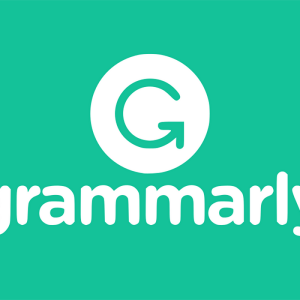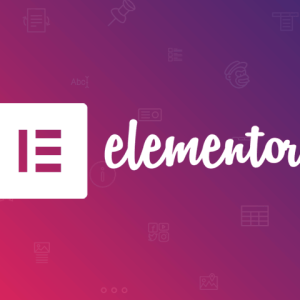
As a venture capitalist, Jim Breyer has invested in many breakthrough technology ideas in recent decades, names we all know and interact with on a daily basis like Meta and Spotify. But the biggest one of all may be next, he says, through the combination of artificial intelligence and branches of science involved in medicine.
Since 2017, Breyer says his No. 1 task as a venture investor has focused on finding the best disease and medical data from leading research hospitals such as Memorial Sloan Kettering, MD Anderson, and Johns Hopkins — highly proprietary, significant data to license into startups Breyer Capital is backing.
“AI and medicine is perhaps the most attractive new investment opportunity I’ve ever seen,” Breyer, founder and CEO of Breyer Capital, said at last week’s CNBC Healthy Returns virtual summit.
Breyer says he is not alone among tech leaders holding this view, citing a fireside chat he recently conducted with Michael Dell, during which the PC pioneer agreed, and private conversations he has had with tech CEOs. “Over the last 12 months, mega-cap companies, based on direct meetings with Satya [Nadella, Microsoft CEO] and Tim Cook [Apple CEO] and others are not just doubling, tripling down on health care and medicine, it’s 10x, 50x,” Breyer said.
But the opportunity won’t translate into achievement without a new form of collaboration between the classic big tech talent and the medical field.
“Bringing together the brilliant 32 or 35-year-old machine learning people out of Amazon or Google or Microsoft and having them work closely with Nobel-winning doctors and great hospitals and great medical specialists is really challenging, but that’s where breakthrough investment returns will be in both public and private companies,” Breyer said.
Dr. Sanjiv Patel, president & CEO of Relay Therapeutics, which works at the intersection of new experimental techniques for drug discovery and computational science, says unlike the “false dawns” over the past few decades, it is for real this time. “It’s no longer science fiction, we have three in clinical trials,” Patel said.
But he cautioned that change will face many obstacles and an uncertain timeline. “There is a lot of hype. People say you push a button in the metaverse and get a life-changing medicine, and I just don’t think were there,” Patel said. “We are looking at incremental change over time … and there are some significant challenges to overcome.”
Some of those challenges will be case-specific as AI attempts to transform healthcare across the entire value chain; some will relate to the general problem of high quality, clean data sets — “that’s not easy to get,” he says; and a third will be the bridging of the scientific talents cited by Breyer.
“The availability of bilingual scientists is going to be a rate limitation for us,” Patel said, defining this as scientists well versed in computation research and one of the core sciences important to medicine — physics, biology or chemistry. “That’s a big one,” he said.
All knowledge industry workers should assume they will need AI technology and remain open-minded about its use, says Dr. Vineeta Agarwala, Andreessen Horowitz general partner. One of her portfolio companies, Insitro, was founded by Stanford AI researcher Daphne Koller (Koller co-founder edtech company Coursera). She cited an example Koller has been using of workers 30 years ago who said they didn’t need personal computing technology when it was becoming more mainstream. “It would have been crazy for the knowledge industries to say ‘We’re okay. We’re doing okay the way we are,’” Agarwala said at CNBC Healthy Returns.
Her VC is “on the prowl,” she says, for founders who say they want to use AI to augment what they can do, so they can do more. “That’s how we look at it, the companies and the researchers and the entrepreneurs,” Agarwala said. “Embracing AI should look a little like those that embraced computers a few decades ago … it will be inconceivable in the future to not be embracing this.”
Unlike the evolution of the PC, which took three decades, she expects in the case of AI this will be “obvious” within five to ten years.
As a doctor, Agarwala says the amount of medical information she needs to stay on top of is already at “fever pitch,” from medical literature to clinical trials and learnings from large sets of patient data. And she noted Microsoft already has integrated ChatGPT with its medical dictation software for doctors. These kinds of AI bridges will help with immediate workflow issues which contribute to physician burnout. “Just in the workflow of seeing patients and interfacing with the payer ecosystem, there may be a way for large language models to contribute to a reduction in burnout,” she said.
After that, comes the “real biology,” she says.
Already, AI is being applied to make better decisions for medicinal chemistry teams to pick better molecules or predict in advance toxicity of certain molecules, and over the next five to 10 years, expect talent that chooses to use AI to augment their role to have this “super power,” Agarwala said.
“It’s not can AI do what a human expert is doing but relentless focus on where AI can give me insight no human could have had,” she said. “There is lots of exciting big talent opportunities coming from big tech and big cap pharma,” she said. “Both need to come together to create companies.”
Cloud services run by big tech companies including Microsoft and Amazon (Amazon Web Services) will be beneficiaries in the immediate years ahead, but for workers already at these companies — which have made steep job cuts over the past year, including some job cuts reaching nascent health science efforts — Breyer is focused on the mid-career talent that see where AI and medicine are going together.
″The single biggest challenge, day to day, week to week, for me is to bring the interdisciplinary individuals and teams together … biotech, computation, specialized chemistry … and have them all working together,” Breyer said.
“The talent I see are the 30 to 35-year-old alumni of these companies, Meta, Microsoft and Alphabet, that want to go into this field on a mission, either through personal family history or view of the opportunity, this is where they want to spend the rest of their careers,” Breyer said. “And rarely have I seen the 10-year alums of these mega caps saying this.”
As Breyer goes out to speak with the next generation of professionals, students at schools including UT Austin, Harvard, Stanford, and Columbia, his message is clear: “This is the single biggest opportunity I’ve seen. However, make sure you are studying linear algebra and computation and chemistry and biology, because all of the fundamental opportunities are about these technologies that sit at the intersection of computation and science.”






